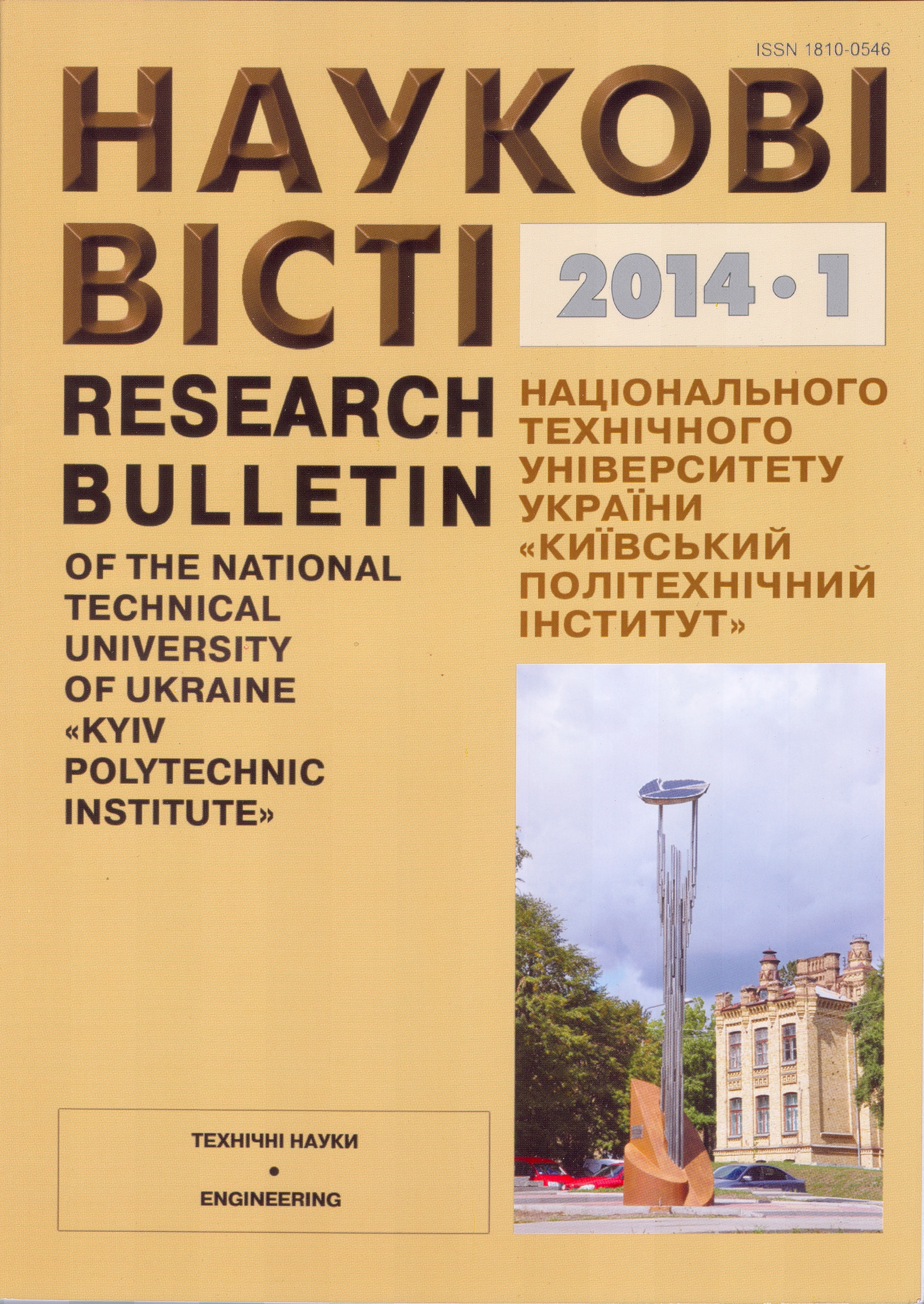Polarization Characteristics of Electroluminiscence, that Accompanies Electric Breakdown of p–n-Structures on Silicon Carbide
DOI:
https://doi.org/10.20535/1810-0546.2014.1.26535Keywords:
Silicon carbide, Electric breakdown, Breakdown electroluminescence, Linear polarisationAbstract
Spectral dependence of the linear polarization extent of electroluminicsence, which accompanies the electric breakdown of alloyed p–n-structures, made on the base of SiC–4Н, 6Н, 15R polytypes, and аlso cubic silicon carbide in the range of 1,4–3,8 еВ have been obtained for the first time. The structures have been placed on the crystal faces, which are parallel and perpendicular to the crystallographic axis С. The luminescence was lead out from the side of thin р-region perpendicularly, and also at the sharp angle to the operating crystal face. The components of luminescence which are polarized linearly in the parallel and perpendicular to the crystallographic axis С (Е||С, Е^С) plane, and also parallel to the vector F of electric field tensity in the p–n-junction (Е||F) have been revealed. Spectral location and intensity of the component, connected with direction of the axis С, have essential differences in different polytypes. Common feature for all polytypes is the presence of polarization (with the level of 0,3–0,4) in the plane Е||С in the region of fundamental absorption and in the adjoining region. Accordance of polarization characteristic of luminicsence to the date on optical absorption takes place only in the separate cases. Polarization Е||F reaches the level 0,5 and tends to increase in the side of increasing of photon energy.References
Санкин В.И. Ванье-штарковская локализация в естественной сверхрешетке политипов карбида кремния. Обзор // Физика и техника полупроводников. – 2002. – 36, № 7. – С. 769–793.
Терагерцовое излучение, вызванное ванье-штарковской локализацией электронов в естественной сверхрешетке карбида кремния / В.И.Санкин, А.В. Андрианов, А.О. Захарьин, А.Г. Петров // Письма в ЖЭТФ. – 2011. – 94, № 5. – С. 393–396.
Генкин А.М., Генкина В.К., Гермаш Л.П. Влияние длительной работы и температуры на спектры карбид-кремниевых светодиодов, работающих в режиме электрического пробоя // Журн. техн. физики. – 1999. – 69, № 10. – С. 69–76.
Елементи та системи поляризаційних приладів для космічних досліджень / М.Д. Гераїмчук, О.М. Генкін, О.В. Івахів та ін. – К.: ЕКМО, 2009. – 188 с.
Алтайский Ю.М., Генкин А.М. О спектрах предпробойной электролюминесценции в карбиде кремния политипа 6Н // Физика и техника полупроводников. – 1980. – 14, № 7. – С. 1397–1399.
Алтайский Ю.М., Генкин А.М. О предпробойном излучении в SiC–15R // Техника средств связи. Сер. Общетехн. – 1982. – № 5. – С. 37–40.
Анизотропия поляризационных характеристик предпробойного свечения диодных структур на основе карбида кремния / В.В. Гуц, Л.А. Косяченко, И.В. Малимон, И.В. Солончук // Укр. физ. журн. – 1986. – 31, № 1. – С. 90–93.
Гуц В.В., Малимон И.В., Солончук И.В. Поляризация предпробойного излучения диодных структур на карбиде кремния // Журн. прикл. спектроскопии. – 1987. – 46, № 1. – С. 153–156.
Шеклифф У. Поляризованный свет. – М.: Мир, 1965. – 264 с.
Волкова Е.А. Поляризационные измерения. – М.: Из-во стандартов, 1974. – 146 с.
G.V. Dubrovskii et al., “Optical absorption assoclated with superlattice in silicon carbide crystals”, Phys. Status Solidi B, vol. 57, no. 1, pp. 423–431, 1973.
Downloads
Published
Issue
Section
License
Copyright (c) 2017 NTUU KPI Authors who publish with this journal agree to the following terms:- Authors retain copyright and grant the journal right of first publication with the work simultaneously licensed under CC BY 4.0 that allows others to share the work with an acknowledgement of the work's authorship and initial publication in this journal.
- Authors are able to enter into separate, additional contractual arrangements for the non-exclusive distribution of the journal's published version of the work (e.g., post it to an institutional repository or publish it in a book), with an acknowledgement of its initial publication in this journal.
- Authors are permitted and encouraged to post their work online (e.g., in institutional repositories or on their website) prior to and during the submission process, as it can lead to productive exchanges, as well as earlier and greater citation of published work

